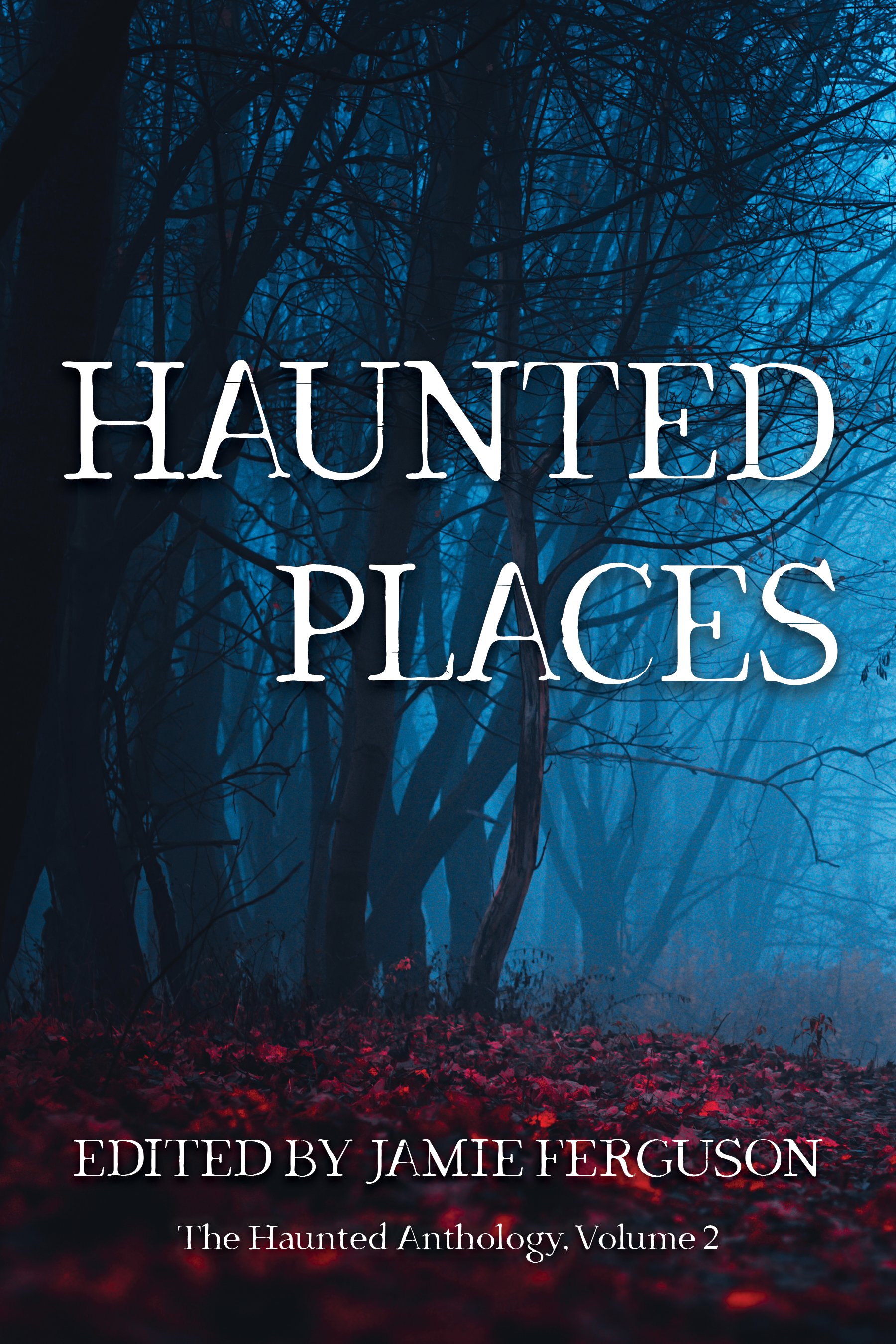Interview: “Zero Proof” by Erik Kort
In “Zero Proof,” a sober queer bar becomes a sanctuary—and a battleground—where chosen family, spectral protection, and personal reckoning collide.
Set against the backdrop of a queer sober bar in the Pacific Northwest, “Zero Proof” is both a ghost story and a love letter to spaces built with intention and care. Erik Kort weaves haunting with hope, threading fierce tenderness and spectral reckoning through a story where identity, survival, and chosen family all leave their marks. A powerful, quietly defiant entry in the hauntpunk lineage of Haunted Places.
Interview Questions
What does “haunted” mean to you—and how does that idea show up in your story?
One way of being haunted is having something stuck in place. A lingering echo of an event, a person, a place. In many ways, anyone who has experienced trauma is haunted. The line between victim and survivor is vanishing thin, and Raven is curled around their trauma in a very specific way, so the story is also curled around Raven. The wounds we receive are scary shit, and it’s only until we can pull away the bandage and see how things are healing that we’re able to be whole.
Did this story start with a particular place, moment, or image that stuck with you?
I’m not a very pun-tastic writer, but I’m not gonna lie. This story started with a pun that amused me so much I had to write it. As frequently happens when I decide to write a “funny” story, things take a sharp left turn off a mountain road.
“Zero Proof” captures a vivid mix of queer culture, trauma recovery, and paranormal mayhem. What made you want to bring those threads together?
One thing I truly love about the queer culture that I’ve discovered and embraced is that so many things are intentional. From the art people put on their bodies, to the art they make of their bodies, to the substances they put in their bodies. Everything has a story and a reason. Queer culture also focuses on Found Family, which means you take responsibility for who you’re tied to and you intentionally create community together. The bar, Without a Trace, is a love letter to that kind of community. A space where people can come together unfettered by their personal hangups and be accepted. I truly believe that no one heals on their own; we heal each other, but only if we’re brave enough to be vulnerable and kind. And everyone deserve that connection and acceptance, no matter what form their bodies take.
This story touches on grief, chosen family, and healing through connection. Why did you choose to tie these themes together?
If there’s a common theme throughout all my stories, it’s that Kindness saves lives while shame and isolation destroy them. None of us are strong enough to get through this life alone. Yet for a lot of my life, every time I hit a rough patch, my reflex was to withdraw. Protect myself from rejection while, in my mind, protecting others close to me from dealing with the messiness that I experienced inside. It takes true courage to reach out in those vulnerable times, just as it takes courage to grasp another’s hand.
The atmosphere is thick—almost foggy, emotionally and literally. How did you find the right tone for Raven’s inner world?
I’ve lived in the Pacific Northwest my entire life and in all the times I’ve felt that eerie prick of being watched, moss-choked fog covered forests were present. It’s a whole vibe. To be fair, Raven is their own vibe, too! They’re a haunted soul and somehow their voice and way of relating to the world just clicked in a way that most characters take a while to achieve.
The way the ghost interacts with glass—both broken and whole—feels intentional and unsettling. What inspired that choice, and what do you see it representing?
Glass is so cool. I grew up on the Oregon Coast and smooth polished beach glass was one of my favorite childhood finds. And glass is 100% recyclable (given proper techniques), it’s incredibly malleable, and it’s beautiful. It takes many shapes and forms, like glasses and goblets. And yet, treated harshly, it shatters and splinters. Takes on shapes that are as dangerous as they are lovely. It mirrors (hey, another great use of glass!) the ones who hold it and becomes what we want. Even when that’s not what we need.
What are you working on now—and what’s fun or exciting about it?
I’m working on my first fantasy (queer) romance about an innkeeper and a healer. It’s a lovely sweet story that’s set in my fantasy setting of Cold Harbor which means the gentle is balanced nicely with acid rain and complex power dynamics. It’s the first time I’ve tried sapphic romance and it features two characters I’ve written about a lot without giving them their own story. For me, it feels like introducing two dear friends to one another, then being delighted by how well they hit it off.
About the Author
Erik Kort writes fantasy and romance. While his stories are sometimes twisted and strange, they always prioritize kindness as that’s the magic worth fighting for. When not writing, he manages a nonprofit for marginalized and at-risk youth. He can be found online and anywhere books or tea are hoarded.
Find Erik at: erikkort.com
Read the Story
“Zero Proof” appears in Haunted Places, available now from Blackbird Publishing.
📚 Buy the book from your favorite store


